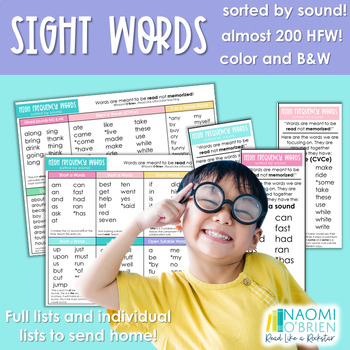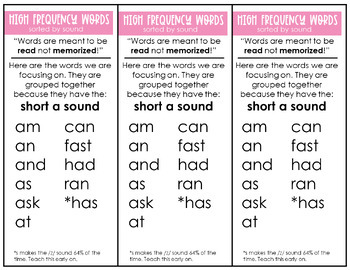Sight Words: Sorted By Sound
- PDF
What educators are saying
Description
I took almost 200 words from the Dolch Words list and organized them by phonics element to make it easier for you to teach and send home for practice. Whenever you see an (*), I included notes and teaching tips.
To teach these words, especially the irregular words follow these steps after you have taught the sound-spelling.
1.Say the word.
2.Say each sound in the word.
3.Write down a letter to match each sound you said.
4.If it’s an irregular sound (like the ai in said making the short e sound), point that tricky part out to kids.
5.You can put a heart over the tricky part to remind kids to remember that small part.
6.Read the word. Stress sounding out and reading words.
Categories included:
short a
short e
short i
short o
short u
floss words & l-controlled vowels
open syllables
digraphs
glued
silent e (CVCe)
y as a vowel
diphthongs
vowel teams
r-controlled vowels
closed syllable exception
A teacher reference guide and individual lists (by sound) for student practice are included.
Available in color or black & white.
Have fun teaching!





